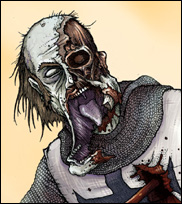The Punch Heard Around the Mass Transit World
Upon viewing the video of the Cleveland bus driver [a heavyweight with obvious punching skill] punch a 130lb woman with an uppercut, yet fail to score an instant KO, three viewers asked me how that could happen. One karate instructor was dismayed by the absence of an immediate KO, as his style is built on the traditional ‘one hit one kill’ karate premise. In general, people were as impressed with the punch as the woman’s ability to take it.
I will tackle this issue from the three perspectives from which I have studied the one-punch knockout. This article is not about how to make a KO happen. Like most boxing coaches I am suspicious of the KO as an immediate combative goal.
Crime
Very few violent attacks, even ambushes, result in a one-strike incapacitation. Overall, aggressors inflict KOs on defenders in one-in-three encounters. Virtually no stabbings or beatings are decided with a single strike. If you isolate shootings and sucker-punch attacks you get back to that one-in-three reality.
About one third of attacks result in KOs, usually multiple strike incapacitations.
About one third of sucker-punch attacks and shootings [the most likely type to result in a single strike incapacitation] result in one-strike incapacitations.
In mutual combats, or brawls, however, you see a greater number of one-strike KOs. By far the majority of these are scored by small trained punchers against larger untrained opponents.
The elements of these KOs are four:
1. skilled verses unskilled combatant
2. greater body mass to strike, offering greater resistance, and resulting in greater impact [160 pound heavyweight champion Robert Fitzsimmons built his career on this kinetic relationship]
3. the larger fighter is very often compounding 1. and 2. By shifting his weight toward his smaller adversary, magnifying the effect of the punch he is walking into
4. shorter men tend to score a higher ratio of KOs because of access to the chin, which is the target taught by boxing coaches as most likely to result in a KO.
Point 4 above naturally dovetails with the next perspective.
Boxing
One third of boxing matches result in KOs.
Have we heard that ratio somewhere before?
Of these KOs perhaps one-in-ten result from a single punch. Virtually all boxing KOs are the direct result of a punch combination. People will tend to focus on that one crucial highlight reel punch. However, these punches are generally part of a 2-5 punch chain of punches. Even the casual boxing fan is grossly misinformed about the frequency of one-punch KOs.
In 21 boxing bouts I have inflicted 7 KOs. Only one of these KOs was a one-punch KO. This punch was a jab to the chin of a heavyweight karate fighter who was nice enough to walk into it, nearly breaking my arm from the shock.
In those same 21 bouts I was KO’d 4 times. All of these KOs were stoppages resulting from an accumulation of body punches.
Even my dubious amateur fringe-boxing career has failed to generate the expected human train wrecks one would expect after growing up watching movie stars and TV actors leveling stuntmen with regularity.
One might think it odd that boxing statistics mirror crime and brawling statistics. It makes perfect sense, since you have harder hitting people punching freakishly tough and determined people.
Keep in mind that all of the many boxers, trainers, and coaches that I have worked with and against, even the KO artists—the dudes with the power to make you piss blood with a single body shot—that each and every one of these hundreds of hard hitting men and those who train them, constantly preach that one punch does not get it done. Phrases like ‘don’t look for the KO’ and ‘throw punches in bunches’ have not become standard by accident. The cold fact is that the men who make their living knocking other men out, all deny the wisdom end efficacy of the one-punch KO. Also, keep in mind that the wrapped gloved fist delivers more shock to the brain than the bare fist.
As for the specific punch in question; the uppercut, let me address that as a coach. The uppercut is the least taught and least used punch of the four standard boxing blows, and rarely, when landed, accounts for a KO. The uppercut is valued primarily as a tool for lifting the opponent’s chin so that it may be struck with a finishing punch, either a straight rear hand punch or a hook.
Contact Weaponry
Even with helmets and fencing masks we experience the occasional KO from a head shot in stick-fighting. One-strike KOs from weapons is almost unheard of. There is a reason why escrima fighters are taught combinations. Now, in the absence of the helmet or fencing mask, against most blows with a ¾ inch 28 inch long rattan rod, you will still not get a one-stroke stoppage unless you score a lateral follow through to the side of the head. This is also likely to kill in the absence of headgear.
Vertical and diagonal shots to the unprotected skull would make a bloody mess, not increase the chances of incapacitation from a single blow. Most batting victims survive three head shots before incapacitation. In fact, numerous bats have been broken over the tops of heads, without stopping the opposing brawler.
Stick-fighters and their coaches very much agree with boxing people about the unlikely nature of a one-stroke KO.
In reconstructing gladiatorial combats with the aid of an ER surgeon and ER technician Modern Agonistics practitioners have spent hundreds of hours dueling with heavy bowie-knife sized blunts and machetes. Now, when you get to arm length blades you are in the instant incapacitation zone, as blows to any body part could instantly maim with sharps, by removing the body part!
So, it is not until we get to military grade edged weapons, that we begin to see a single incapacitating blow to be more likely than an incapacitating combination. About two in three machete duels are decided by a single stroke, the rest by an accumulation of minor strokes, or a combination of minor and fatal strokes. Even the Romans, butchers extraordinaire of antiquity, did not expect one stroke from their man-cleaver to get it done.
The One-Punch Myth
There are guys out there with one-punch power. If you are one of those kinetic wonders than base your survival strategy on that reality. If you are normal your one-punch dream won't do you a lot of good come crunch time.
In light of all of his evidence, why would anyone be surprised when a single punch fails to knock a person senseless?
The answers, I am afraid, are all cinema icons: John Wayne, Bruce Lee, and any actor who has played James Bond. We expect a one-punch KO based on years of watching stuntmen ply their trade.











